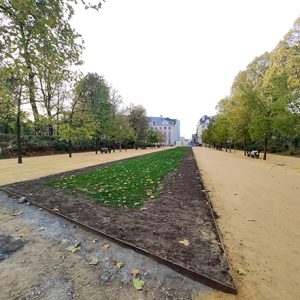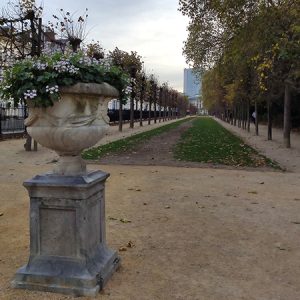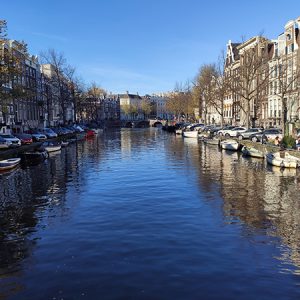Amsterdam canal view (Netherlands)
$ 30,00
Description
Location: Amsterdam (Netherlands)
Taken on: November 12, 2022
Format: JPEG
File size: 7.7 MB
Dimensions: 4000 x 3000 pixels
DPI: 300
Photographer: Andrey Kashukov, Cyprus
Photo can be used in posters, brochures, magazines, websites, blogs, business cards, applications, social media branding, packaging, postcards, notebooks, invitation backgrounds, flyers, banners, badges, stickers, collages, booklets, illustrations, etc.
Photo can be used in applications: Adobe Photoshop, Adobe Photoshop Lightroom, Adobe Photoshop Elements, Adobe InDesign, Adobe Illustrator, Adobe XD, Adobe Express, Adobe After Effects, GIMP, Photopea, Krita, Pixlr E, Pixlr X, Paint.NET, Affinity Photo, Corel PaintShop Pro, CorelDRAW Graphics Suite, Capture One Pro, Luminar Neo, Pixelmator Pro, ACDSee Photo Studio Ultimate, Affinity Designer, Procreate, Sketch, etc.
Enchanting Amsterdam Canal View – Historic Waterside Charm
Capture the serene beauty and historic charm of Amsterdam with this captivating photograph, taken on a crisp November 12, 2022. This stunning image showcases a quintessential Amsterdam canal scene, perfect for adding a touch of Dutch elegance to your home or office.
The photograph features a picturesque wide-angle view of a tranquil canal, reflecting the clear blue sky above. In the foreground, the calm waters are dotted with several classic Amsterdam boats, including a charming yellow-topped canal cruise boat and a sleek, dark-hulled vessel navigating the gentle currents, hinting at the city’s vibrant waterborne life.
Dominating the mid-ground is a beautiful, light-colored building with distinctive red-tiled roofs and multiple gables, gracefully situated right on the water’s edge. Its classic architecture and inviting presence suggest a traditional Dutch establishment, possibly a restaurant or a historical landmark, with large windows overlooking the canal. Stairs leading down to the water add to its accessibility and charm.
In the background, a grand, imposing brick building with multiple stories and a classic European architectural style stretches along the canal bank. Its intricate detailing and numerous windows speak to Amsterdam’s rich history and enduring architectural heritage. The warm brick tones contrast beautifully with the cool blues of the water and sky.
This image perfectly encapsulates the unique atmosphere of Amsterdam: a harmonious blend of historic architecture, peaceful waterways, and a bustling urban landscape. It’s a testament to the city’s timeless appeal and its iconic canal system.
Ideal for:
- Art lovers and collectors
- Travel enthusiasts
- Those seeking unique home decor
- Anyone who appreciates European cityscapes and architectural photography
Bring the tranquility and beauty of Amsterdam into your space with this exquisite photographic print.
Amsterdam’s canals are one of the city’s most iconic and defining features, earning it the nickname “Venice of the North.” They are a masterpiece of urban planning and hydraulic engineering, reflecting centuries of Dutch ingenuity and shaping the city’s unique character.
Here’s a breakdown of what makes Amsterdam’s canals so special:
-
A Vast Network: Amsterdam boasts an extensive network of over 165 canals, stretching for more than 100 kilometers (60 miles). This intricate system divides the city into numerous small islands, which are connected by over 1,200 bridges.
-
The Grachtengordel (Canal Ring): The most famous and historically significant part of the canal system is the “Grachtengordel,” or Canal Ring. Built during the Dutch Golden Age in the 17th century, this monumental project was a planned urban expansion that quadrupled the city’s size. It consists of three main semi-circular canals:
- Herengracht (Patricians’ Canal): Historically the most prestigious, lined with opulent merchant houses. The “Golden Bend” section is particularly renowned for its grand mansions.
- Keizersgracht (Emperor’s Canal): The widest of the main canals, named after Emperor Maximilian I.
- Prinsengracht (Prince’s Canal): The outermost of the three, known for its mix of historic weight and modern vibrancy, including the Anne Frank House.
- Singel: While sometimes considered part of the main ring, the Singel was originally a defensive moat around the medieval city before the larger canals were dug.
-
UNESCO World Heritage Site: In 2010, the 17th-century Canal Ring Area of Amsterdam (inside the Singelgracht) was designated a UNESCO World Heritage Site. This recognition highlights its historical and cultural significance as a “masterpiece of hydraulic engineering, town planning, and bourgeois architecture,” and a model of large-scale urban planning for its time.
-
Purpose and Evolution:
- Early Canals: The very first canals, dating back to the 13th century, were primarily for water management and defense.
- Golden Age Expansion: During the 17th century, as trade boomed, the canals became crucial for transportation of goods and people. They allowed merchandise to be “pipelined” from the harbor directly to the warehouses and doorsteps of merchants.
- Modern Day: Today, while still used for some commercial transport, the canals are primarily a source of recreation and tourism. Canal cruises are immensely popular, offering a unique perspective of the city’s iconic gabled houses, charming bridges, and vibrant waterside life. Many houseboats also line the canals, providing unique residential spaces.
-
Architectural Features: The canal houses are distinctively narrow and tall, a result of property taxes being based on street frontage in historical times. Many feature elaborate gables (step, neck, bell, and spout gables) and hooks at the top, used for hoisting goods to upper floors due to narrow staircases. Some houses exhibit a characteristic tilt, a charming consequence of centuries of settling on their wooden pile foundations.
-
Water Quality: Historically, the canals were stagnant and often polluted. However, significant efforts have been made since the late 19th century to improve water quality, including steam-powered pumps for flushing and legislation to prevent waste dumping from houseboats.
In essence, Amsterdam’s canals are more than just waterways; they are the arteries of the city, weaving together its rich history, unique architecture, and vibrant contemporary life.




